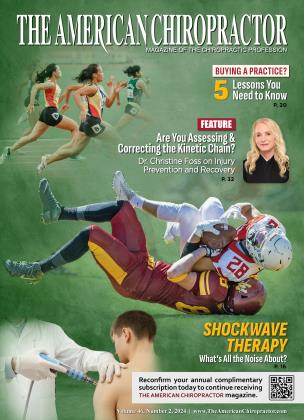Achieve the Closing Sweet Spot with Lucrative Offers
by Richard E. Busch III, DC
In the expansive realm of chiropractic and cash practices, the term "HIGH Ticket Items" resonates as a common catchphrase, especially in the domain of marketing strategies. Diving deeper into this realm reveals multifaceted philosophies surrounding cash practices and the art of securing patient commitments. Among these approaches, there's one philosophy we've previously explored, which diverges from high-ticket items. It's the approach of a modest, walk-in cash practice—a setting with limited services, minimal prestige, subdued expectations, and little authority, where patients retain complete control.
As I engage with fellow doctors regarding their "High Ticket" items and the underlying philosophy, a glaring truth emerges. Many of these doctors lack the finesse to seal the deal and facilitate patient payments effectively. Amidst the various high-pressure sales techniques prevalent in cash practice models, the primary predicament is apparent: patients depart either without making a purchase or, if they do, they depart, bearing the weight of buyer's remorse. In numerous instances, the patient's financial constraints hinder their ability to afford the care or access financing options.
When navigating through these treatment programs and methodologies, a series of pivotal inquiries arise. How profoundly does the patient's issue resonate with them? To what extent does it impinge upon their daily life? Does it compromise their quality of life, and if so, to what degree? What prior treatments have the patient experimented with to alleviate their current pain? What are the tangible costs for the patient? How transformative will your intervention be for this patient? Will this patient become a source of referrals? And crucially, is the fee aligned with the market's capacity to bear it?
Let's start at the top. When a patient perceives a problem and believes in your capacity to resolve it, there is virtually no price ceiling until they discern it surpasses the perceived value. I've encountered tales of clinics in distant locales charging upwards of $15k for spinal decompression treatments. My question to those aspiring to elevate their fees to such heights is simple: how many patients do they actually close? Often, the response is shrouded in uncertainty. Even with a lower fee range of $6-9k, the closure rate might hover around 30%. The assumption that elevating fees will be the panacea overlooks critical factors. Poor office procedures and high-pressure sales tactics—these undermine the essence of service. Is it a specific service you offer or merely a product easily or cheaply aquired elsewhere?
Pricing dynamics play a pivotal role here. Charging exorbitantly might alienate potential patients, relegating closure rates to a mere 5-10%. Finding the equilibrium—what the market will bear—requires gauging the median income of the area. This isn't just a shot in the dark; there's a methodology behind it and drawing insights from other professions' pricing structures, such as braces or cosmetic surgery, can serve as a guiding principle.
Understanding a patient's treatment history unveils their perception of the issue's severity, granting some flexibility in fee structuring. How much will this treatment restore their quality of life? That's the question that necessitates exploration.
These inquiries wield substantial influence over closure rates. It's not about limiting your worth but understanding the value you provide. Ethical pricing aligned with the value of the service rendered warrants fair compensation. Yet, if the closure rate dwindles below 70%, it's time for introspection. Is it your presentation, approach, reputation, or perhaps your fee structure that's impeding success? Ensuring that the value proposition aligns with the patient's perception of the problem's gravity is paramount.
My intent isn't to confine your fee structure; it's about empowering doctors to achieve better outcomes, serve more patients, and secure commensurate revenue for their practices and families. The era of struggling chiropractors is a relic of the past. Embracing these considerations can grant our profession a more substantial stake in the evolving landscape and afford us greater control over our destiny. I've operated with a prepaid case fee model for 28 years, commanding higher fees while maintaining a closure rate exceeding 85% throughout this period.
Dr. Richard E. Busch III has been in private practice in Fort Wayne, IN since 1996. He has built one of the largest spinal decompression and cash practices in the world. Dr. Busch has also trained many chiropractors and medical doctors in prepaid case fee cash practice. For more information go to Cashmasterpractice.com 5005 Riviera Ct., Fort Wayne, IN. 888-471-4090 or [email protected].
 View Full Issue
View Full Issue






